
Smart Tips for Finding the Best Ebikes on Sale Online
Seizing the Moment
Sale season is an exciting time to find ebikes on sale. The chance to save hundreds or even thousands of dollars on a big purchase can be thrilling. However, the rush of a limited time offer can lead to quick decisions and buyer's regret. A truly smart purchase goes beyond the discount percentage.
It's about finding the right bike, with the right parts, from a good seller, at a truly good price. To navigate the world of online ebike sales successfully, you need a strategy. This guide will give you the knowledge to make an informed choice.
Here are the core principles for smart shopping when you look for an ebike online:
- Timing is Everything: Understand the annual sale cycles to expect the best deals.
- Look Beyond Price: Learn to read specs to ensure the bike's quality matches its price tag.
- Verify the Deal: Use a checklist to determine if a sale is real or just clever marketing.
- Trust the Seller: Know how to check a seller's reputation and customer support.
The Shopper's Calendar
Finding the best deals on ebikes on sale isn't about luck; it's about timing. The e-bike market follows a predictable calendar of promotions. By understanding it, you can plan your purchase instead of reacting to the first discount you see.
Major Holiday Sales
Major shopping holidays like Black Friday, Cyber Monday, and Amazon's Prime Day are prime time for e-bike deals. These sales typically feature big discounts on popular, mass-market models from major brands. The deals are often real, but the competition is fierce, and stock can run out quickly.
These are excellent opportunities if you're looking for a well-known commuter or all-around model and are prepared to act fast.

End-of-Season Clearances
From late summer to early fall (August-October), brands and retailers begin clearing out the current year's models to make room for the next. This is arguably the best time to find the steepest discounts. You can find high-quality bikes for 20-40% off their original price.
The trade-off is that you're buying slightly older technology, but the year-over-year changes in e-bikes are often small. For most riders, a top-tier model from last year is a much better value than a mid-tier model from the current year.
Brand-Specific Sales
Don't wait for a major holiday. Many brands run their own flash sales or anniversary promotions throughout the year. The best way to catch these is to identify your top 3-5 potential brands and follow them directly.
Pro-Tip: Sign up for the email newsletters of your favorite e-bike brands and retailers a month or two before you plan to buy. You'll be the first to know about upcoming sales and may even receive exclusive subscriber-only coupon codes.
Decoding E-Bike Specifications
A flashy "50% Off!" banner means nothing if the bike itself doesn't meet your needs. To find a quality ebike online, you must look past the marketing and learn to read the spec sheet. This is where you find the true value of the bike. Here are the most critical components to understand.
The Heart: The Motor
The motor is what makes an e-bike electric. The two main types are hub-drive and mid-drive, and they offer very different riding experiences.
Hub-drive motors are located in the hub of the front or (more commonly) rear wheel. They "push" or "pull" the bike along. They are generally less expensive and require less maintenance.
Mid-drive motors are located in the center of the bike frame, where the pedals are. They apply power directly to the drivetrain (the chain), which feels more like natural, amplified pedaling. They are typically more efficient and better for climbing steep hills.
| Feature | Hub-Drive Motor | Mid-Drive Motor |
|---|---|---|
| Feel | A "pushing" or "pulling" sensation. | Natural, intuitive, like bionic legs. |
| Best Use | Commuting, flat to rolling terrain. | Hilly terrain, mountain biking, performance. |
| Maintenance | Lower maintenance, self-contained unit. | Puts more wear on chain and cassette. |
| Typical Cost | Less expensive. Common on bikes under $2000. | More expensive. Common on premium bikes. |
The Fuel Tank: The Battery
The battery determines your range. Don't get lost in the numbers; focus on the most important one: Watt-hours (Wh). This is the best measure of a battery's total capacity.
You can calculate it by multiplying Volts (V) by Amp-hours (Ah). A bigger Wh number means a longer potential range. As a general guide, a 500Wh battery will typically offer 25-50 miles of range, depending on the terrain, rider weight, and level of pedal assist you use. For most commuters, a battery between 400Wh and 600Wh is a great starting point.
Safety First: Brakes and Certifications
With the added speed and weight of an e-bike, good brakes are non-negotiable. We strongly recommend bikes with hydraulic disc brakes over mechanical ones. They offer significantly more stopping power and control with less effort, which is crucial for safety in traffic or on steep descents.
Equally important is battery safety. Fires caused by cheap, uncertified batteries are a serious risk. Always look for evidence that the bike's entire electrical system (battery, motor, and charger) has been tested and certified.
The most important standard in North America is UL 2849. A reputable brand will proudly advertise that they have critical safety certifications like UL 2849. If a seller can't confirm this certification, walk away.
The Real Deal Checklist
You've found an e-bike on sale with the right specs. But is the deal as good as it seems? Before you click "buy," run through this savvy shopper's checklist to protect yourself from common marketing traps.
Step 1: Verify the "Original" Price
Marketers sometimes inflate the "original price" to make a discount look bigger than it is. Use a browser extension like CamelCamelCamel for Amazon or simply search for the bike model on other retail sites to get a sense of its true, non-sale price over the last few months. Is the sale price genuinely lower than its typical price, or is it just a return to normal after a brief price hike?
Step 2: Factor in Shipping & Assembly Costs
That great price can quickly become average once you add a $150 shipping fee. Look for the final, all-in price. Furthermore, most online e-bikes require some assembly.
Based on our experience, even for a moderately handy person, unboxing a 60-70 lb e-bike and assembling it can take 1-2 hours. You'll typically need a set of Allen keys and a wrench. Some steps, like adjusting brakes and derailleurs, can be tricky.
Factor in the cost of a tune-up at a local bike shop ($75-$150) if you're not confident in doing it yourself.
Step 3: Scrutinize the Warranty and Return Policy
A warranty reveals a brand's confidence in its product. Is it a 1-year comprehensive warranty covering all components, or a 2-year warranty that only covers the frame? Look for at least a 1-year warranty on the battery and motor.
The return policy is just as important. Do they offer a 14- or 30-day trial period? If you have to return it, who pays for the return shipping?
Shipping a massive e-bike box back to the seller can cost you over $200 out of pocket.
Step 4: Read Recent, Independent Reviews
Don't just rely on the glowing testimonials on the brand's own website. Search for the bike model on YouTube, Reddit (like the r/ebikes subreddit), and independent review sites. Look for reviews from actual owners who have ridden the bike for several months.
They will give you the real story on long-term reliability and customer service experiences.
Vetting the Seller
Where you buy your e-bike is almost as important as what you buy. A trustworthy seller provides peace of mind and support after the sale. Here's how to evaluate your options.
Direct from the Brand
Buying directly from a brand's website (like Aventon, Rad Power Bikes, or Lectric) is often a great choice.
Pros: You get the full manufacturer's warranty, access to expert customer support that knows the product inside and out, and the most accurate information.
Cons: Your choices are limited to that single brand, and you might miss out on multi-brand sales events.
Major Online Retailers
Large retailers like Best Buy or dedicated online bike shops like BikesOnline also sell e-bikes.
Pros: These companies have established reputations for logistics and customer service. Returns may be easier, especially if they have a physical store location.
Cons: The support staff are generalists and may not be able to answer technical, e-bike-specific questions.
Red Flags to Watch For
Regardless of where you shop, be on the lookout for these warning signs of a questionable seller:
- Prices that are too good to be true for the specs offered (e.g., a 750W mid-drive bike for $600).
- A professional-looking website that has no physical address or customer service phone number listed.
- Poorly written product descriptions with numerous spelling and grammatical errors.
- No mention of a warranty or a return policy that is extremely vague or restrictive.
- A complete lack of independent reviews anywhere online.
After the Click
Your new e-bike has arrived. The final steps are crucial for ensuring a safe and enjoyable ownership experience.
Unboxing and Assembly
Before you open the box, find the official assembly video from the brand on YouTube and watch it all the way through. This will give you a clear idea of the process and the tools required. Take your time with assembly.
Pay close attention to tightening all bolts to the recommended torque, especially on the handlebars, stem, and front wheel.
Pre-Ride Safety Check
Before every single ride, perform a quick safety check. It takes less than a minute and is the most important habit you can develop.
- Tires: Squeeze the tires to ensure they are firm and have enough air pressure.
- Brakes: Squeeze both brake levers to confirm they feel firm and effectively stop the wheels from turning.
- Bolts: Quickly check that your wheels are secure and that your handlebars aren't loose.
Understanding Local Laws
E-bikes are not motorcycles; they are regulated under a specific legal framework that can vary by state and even by city. Most regions use a 3-Class system:
- Class 1: Pedal-assist only (no throttle), with a maximum assisted speed of 20 mph.
- Class 2: Has a throttle and can be propelled without pedaling, with a maximum motor-powered speed of 20 mph.
- Class 3: Pedal-assist only (no throttle), with a higher maximum assisted speed of 28 mph.
Knowing your bike's class is vital, as it determines where you can legally ride. Many multi-use paths and mountain bike trails restrict access for Class 2 or Class 3 e-bikes. Always check your local e-bike regulations to ensure you ride safely and legally.
Frequently Asked Questions
When is the best time to find ebikes on sale?
The best times to find ebikes on sale are during end-of-season clearances (August-October), major shopping holidays like Black Friday and Cyber Monday, and brand-specific flash sales throughout the year. End-of-season clearances often offer the steepest discounts of 20-40% off as retailers make room for new models.
What should I look for when buying an ebike online?
When buying an ebike online, focus on the motor type (hub-drive vs mid-drive), battery capacity measured in watt-hours (Wh), brake quality (hydraulic disc brakes recommended), and safety certifications like UL 2849. Also verify the seller's reputation, warranty terms, and return policy before purchasing.
How do I know if an online ebike deal is legitimate?
To verify a legitimate deal, check the original price on multiple websites, factor in shipping and assembly costs, read the warranty and return policy carefully, and look for independent reviews from actual owners. Be wary of prices that seem too good to be true or sellers without physical addresses.
What's the difference between hub-drive and mid-drive motors?
Hub-drive motors are located in the wheel hub and provide a pushing or pulling sensation, making them ideal for commuting on flat terrain with lower maintenance needs. Mid-drive motors are located at the pedals and provide a more natural riding feel with better hill-climbing ability, but they're typically more expensive and put more wear on the drivetrain.
Do I need special tools to assemble an ebike bought online?
Most online ebikes require basic assembly using Allen keys and wrenches, which typically takes 1-2 hours for a moderately handy person. However, some steps like brake and derailleur adjustments can be tricky, so consider budgeting $75-$150 for a professional tune-up at a local bike shop if you're not confident in your mechanical skills.
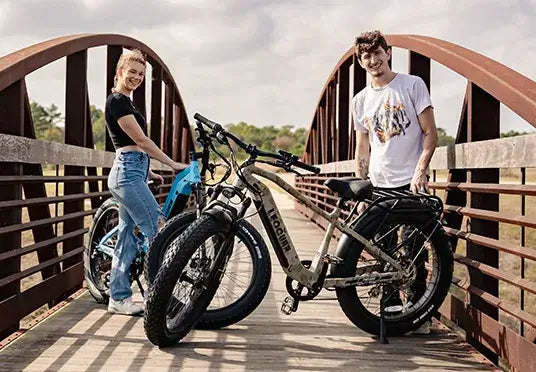
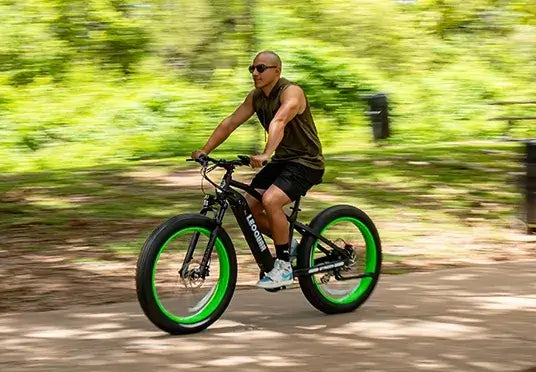

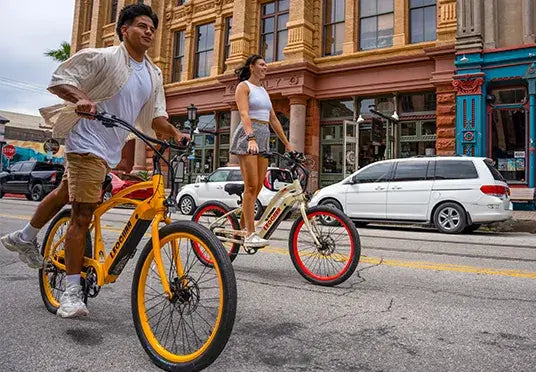
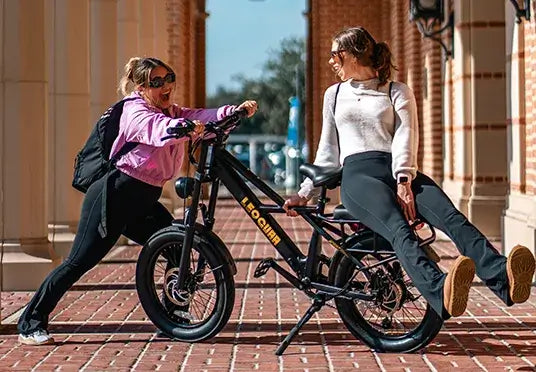
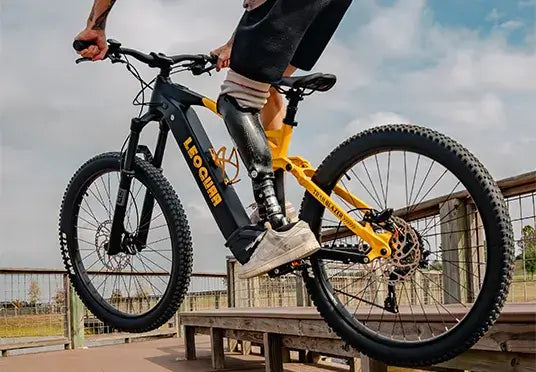































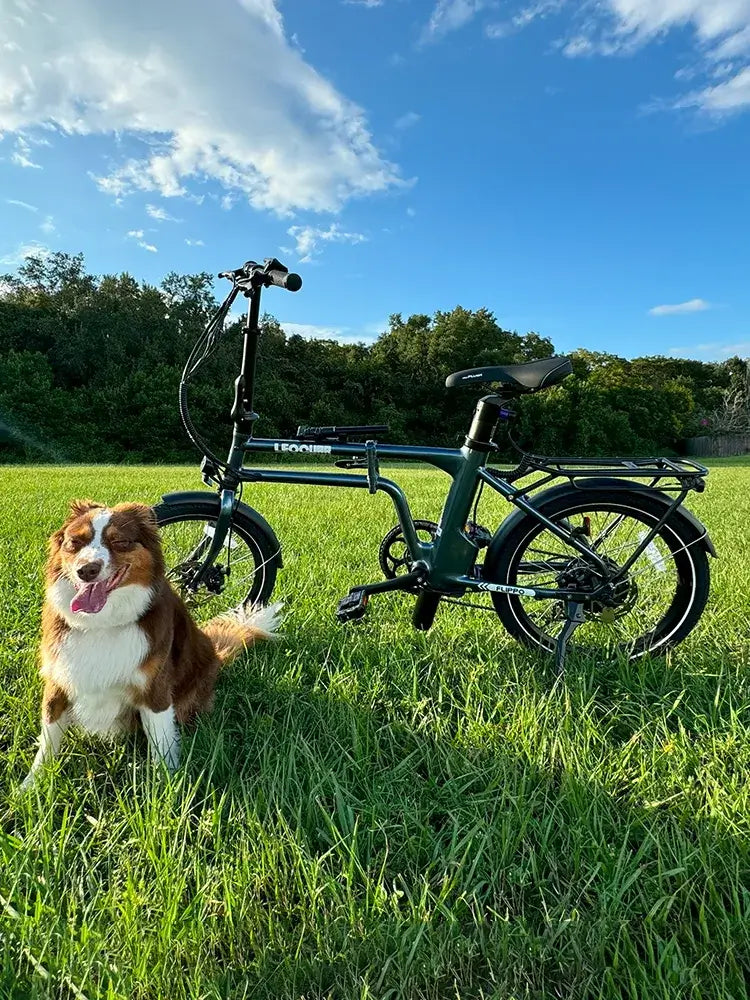










Leave a comment
Please note, comments must be approved before they are published.
This site is protected by hCaptcha and the hCaptcha Privacy Policy and Terms of Service apply.